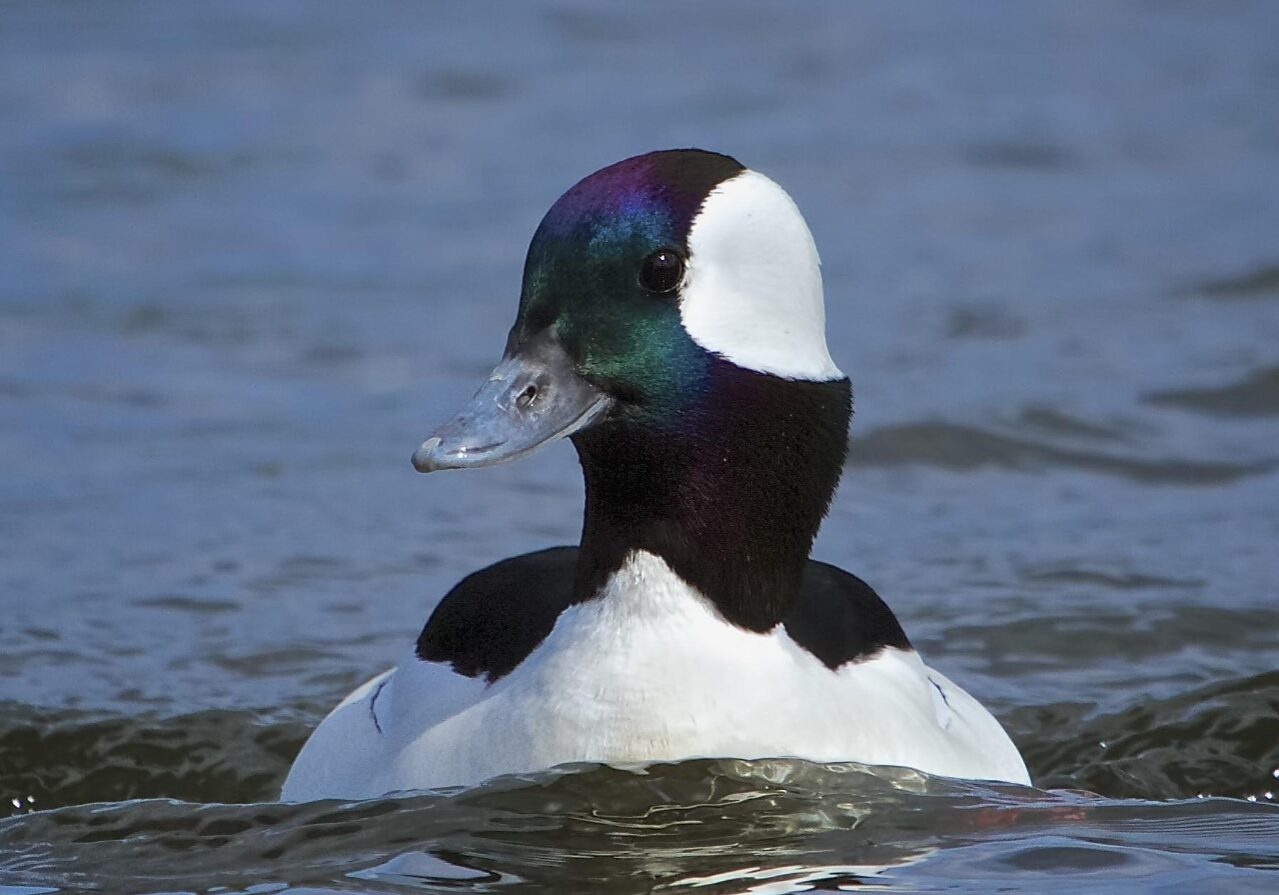
Bufflehead (Bucephala albeola)
This uncommon, small diving duck catches our eye in Alberta lakes and wetlands. The male's disproportionately large head - like a buffalo’s (bison’s) head - was the inspiration for its name.
HOW TO IDENTIFY
- Males are very striking with a large white patch that reaches from cheek to cheek over the back of their dark iridescent head.
- Females are less boldly coloured and are dark grey-brown with oval white cheek patches.
- Downy ducklings are black to dark grey with white patched cheeks, and a white throat, lower breast, and belly.
Identify in Flight
- M & F in flight by Gerald Romanchuk
M & F in flight by Gerald Romanchuk - compact, big-headed black and white duck with a fast, direct flight that rocks side-to-side on fast wing beats
- white band on upperwing on adult males and white patch on upperwing secondaries in females and first year males
- takes flight directly from water into the air, unlike other diving ducks who run across the water before taking flight
Identify by Sound
Buffleheads don't sound like the usual "quack quack quack" like other ducks. Their vocabulary consists mostly of throaty "grrks", squeaky whisltes, chattering, and guttural "cuk cuk cuks".

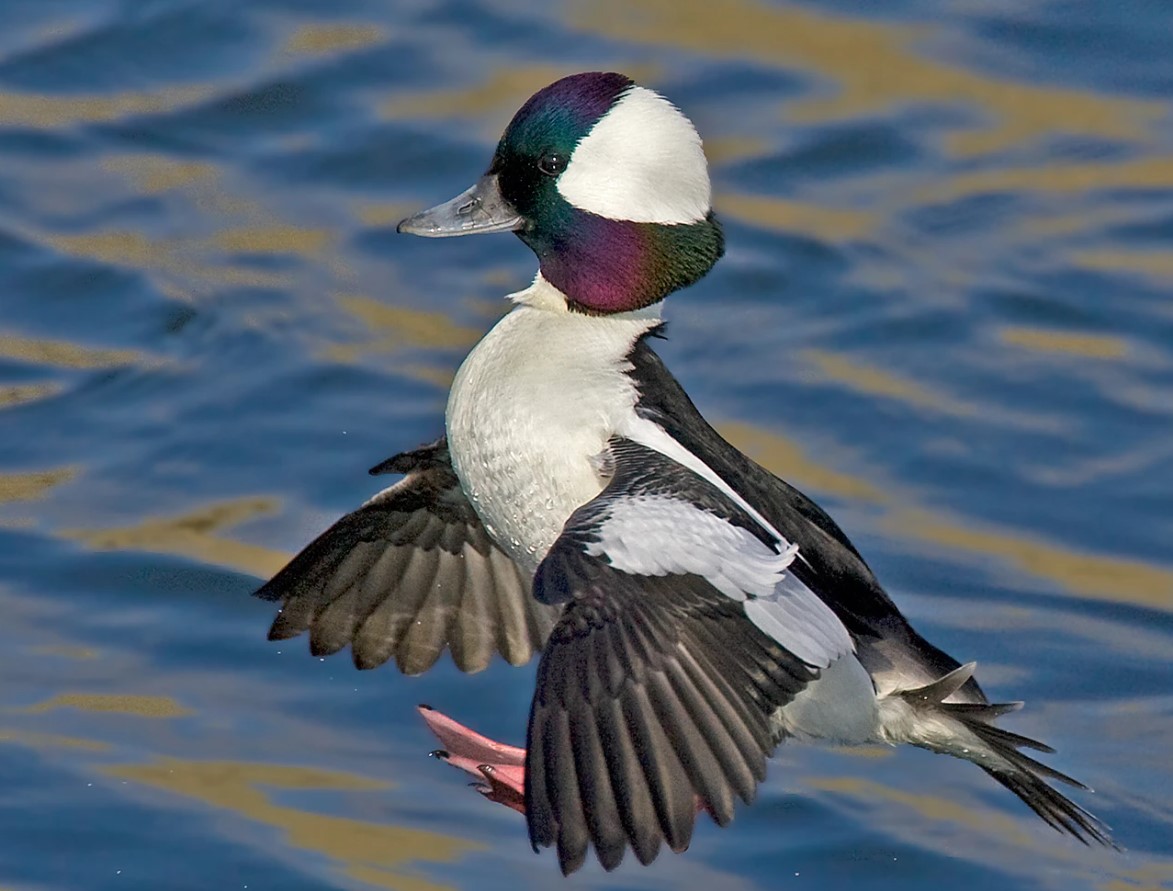
BEHAVIORS
Bufflehead swim buoyantly, dive easily, and take flight by running a short distance on the surface. They fly low over the water and higher over the land. To dive, Bufflehead compress their plumage to squeeze out air, then give a slight forward leap and plunge powerfully downward. They hold their wings tightly against their bodies underwater and use only their feet to propel themselves. At the end of a dive, they may bob to the surface like a cork. Throughout the day they alternate between bouts of feeding, swimming alertly, preening, and sleeping.
Bufflehead are seldom seen on dry land: females walk only when they lead their ducklings from the nest to the water or when they’re forced to switch ponds with their ducklings. Males court females by flying over them, skiing to a stop on the water with their crests raised, and bobbing their heads. During the breeding season, territorial birds attack intruders by flying or swimming underwater at them and thrashing at them with their wings. When a pair of Buffleheads intrudes into a nearby territory, the male that owns the territory often chases the intruding female and her mate follows them in hot pursuit. Males leave their mates during incubation in order to molt, but return to the same mate multiple years in a row (one of the few duck species in which this is true).
WHERE TO FIND
Buffleheads are found in lakes and wetlands in the boreal forest and aspen parkland regions of Alberta during migration and the breeding season. It nests in abandoned Northern Flicker cavities within poplar or aspen trees, or in a nest box. Breeding Buffleheads use permanent freshwater small lakes or ponds with abundant emergent and submergent plants.
Buffleheads are one of the last ducks to leave Alberta before winter arrives. They overwinter on the Pacific and Gulf coasts, and the Southwest USA.
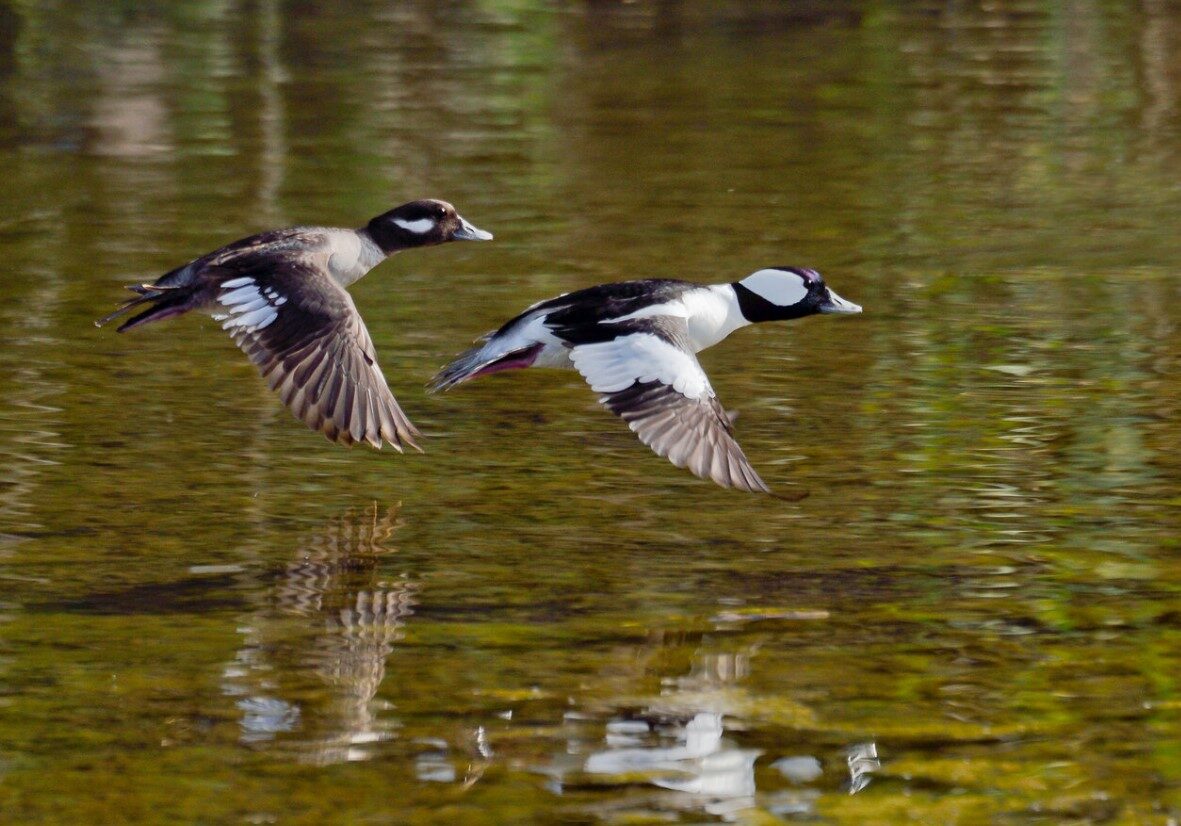
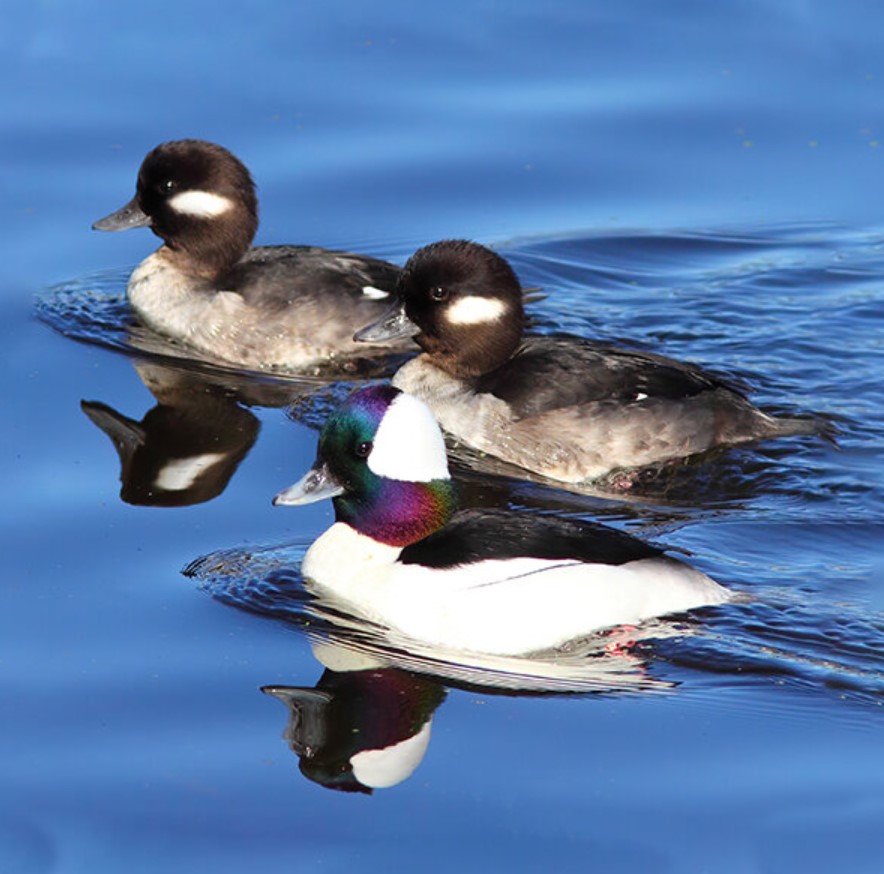
SOCIAL LIFE
Bufflehead breeding pairs claim a small lake where the female picks a cavity to nest in. Once she lays her eggs, the male departs to a molting ground where he will spend the rest of the summer with other unemployed males.
Buffleheads are territorial. Males will defend a female by diving under water and popping up underneath a rival male. Females will defend the water where she rears her young.
Male courtship displays involve head-bobbing, flying over and landing into a 'waterski' position showing off his pink legs and shimmery plumage.
NEST PLACEMENT
Bufflehead nest only in cavities, using holes dug by Northern Flickers and sometimes Pileated Woodpeckers (as well as artificial nest boxes). In the summer, females that are too young to breed, or whose nests have failed, fly around in noisy groups and scope out the available nest holes for the following breeding season. Just before laying, females make more secretive flights to prospective holes, either alone or with their mates. They usually choose cavities in poplar or aspen trees, except in California where they often use pine trees.
NEST DESCRIPTION
Nest in tree cavity or nest box, lined with downy feathers from chest of female.
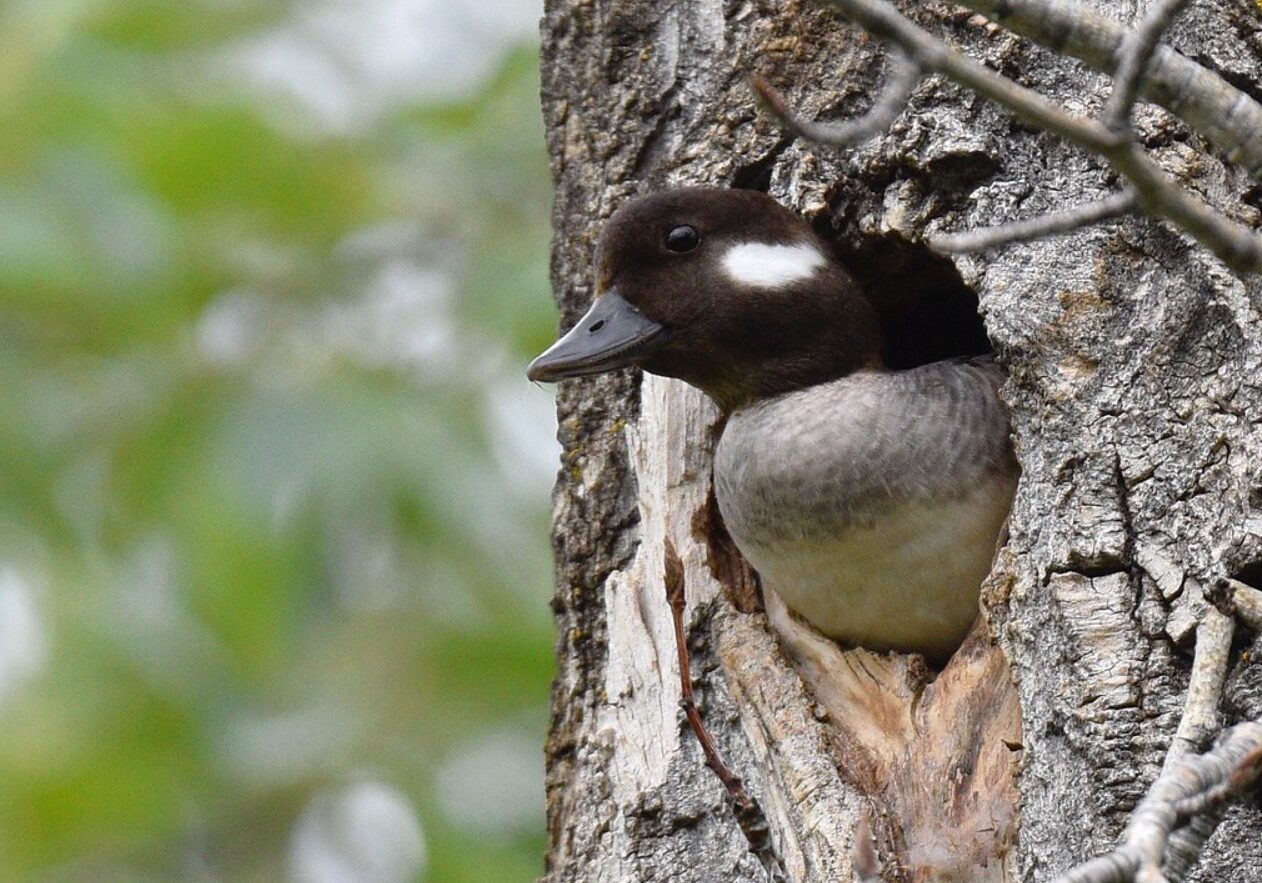
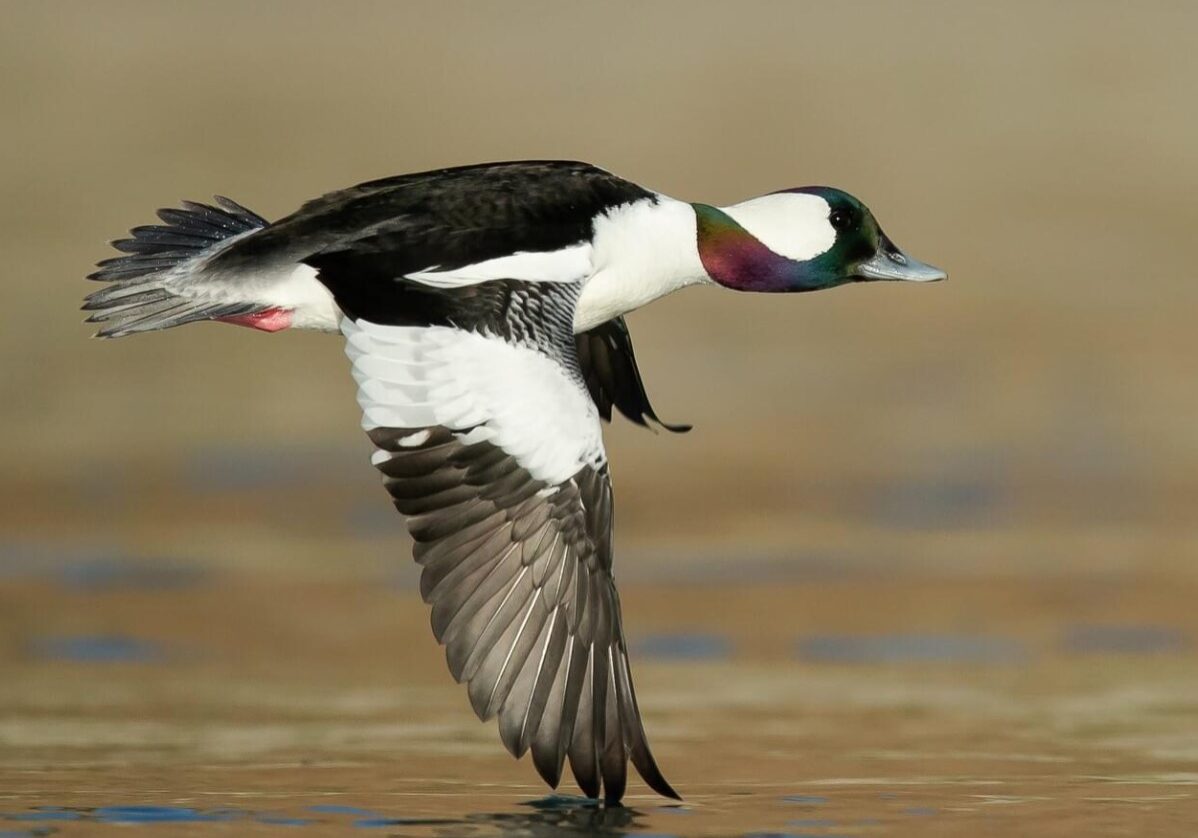
FOOD CHAIN
Bufflehead dive for aquatic invertebrates, crustaceans, and mollusks. They typically swallow their food while still underwater. Dives last on average about 12 seconds and rarely more than 25 seconds, typically staying on the surface another 12 seconds or so before diving again. Bufflehead forage in open, shallow water over sparse submerged vegetation or over mudflats that would be exposed at low tide. On freshwater they mostly eat damselfly and dragonfly larvae, midge larvae, water boatmen, mayfly larvae, caddisfly larvae, large zooplankton such as amphipods, and snails and clams in winter.
They eat some plant matter in fall and winter, mainly seeds of pondweeds and bulrushes. In saltwater, Bufflehead eat shrimp, crabs, amphipods, isopods, snails, mussels, herring eggs, sculpins, and ratfishes. Downy ducklings sometimes dabble at the surface rather than diving.
Buffleheads eat aquatic insects, larvae, snails, small fish, and aquatic plants.
They are prey for raptors such as bald eagles, cooper's hawks, peregrine falcons, and great horned owls. Ducklings are sometimes prey to northern pike and gulls. The nest eggs are raided by bears, and members of the weasel family.
FUN FACTS
- The oldest known bufflehead fossils are from the late Pleistocene (approximately 500,000 years ago!)
- The oldest known bufflehead was 18 years and 8 months old. A bird-bander in New York recorded this bird.
- The monogamous pair use the same nest site for several consecutive years.
- They can stay underwater for up to 24 seconds, only propelling themselves using their feet!
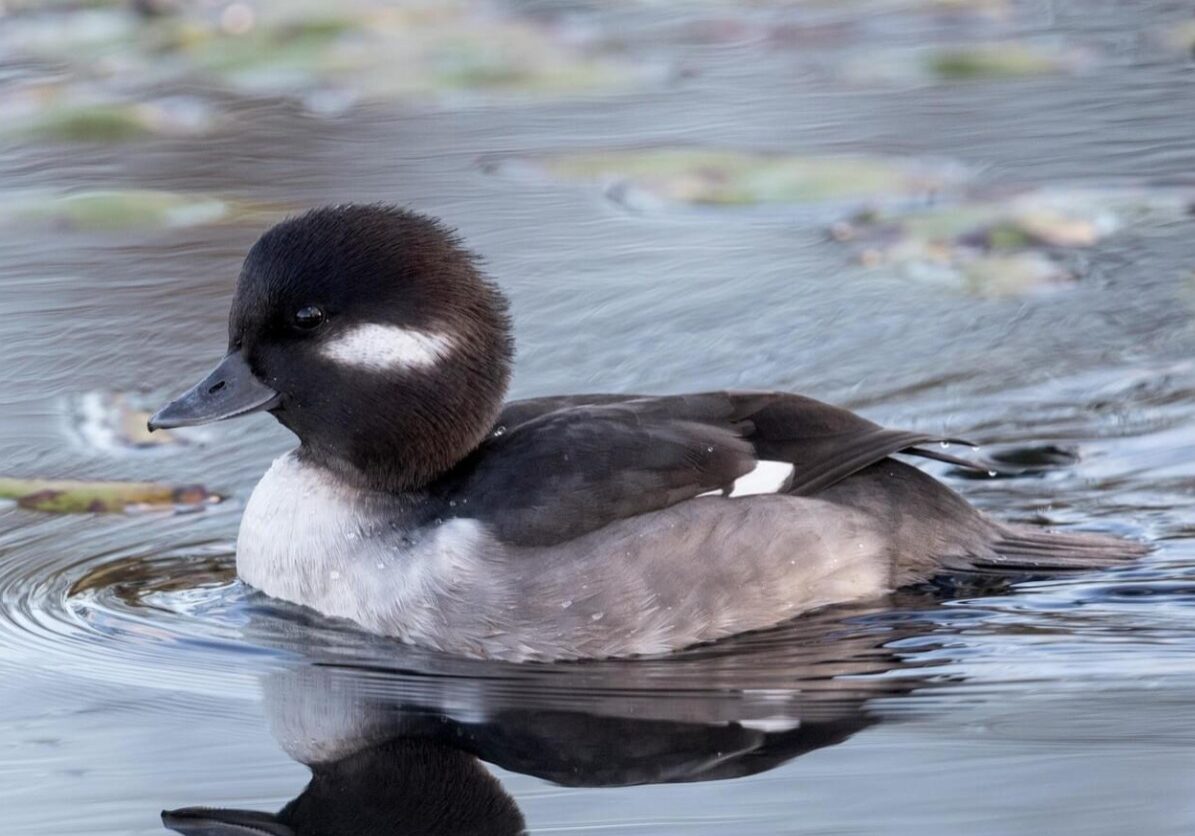
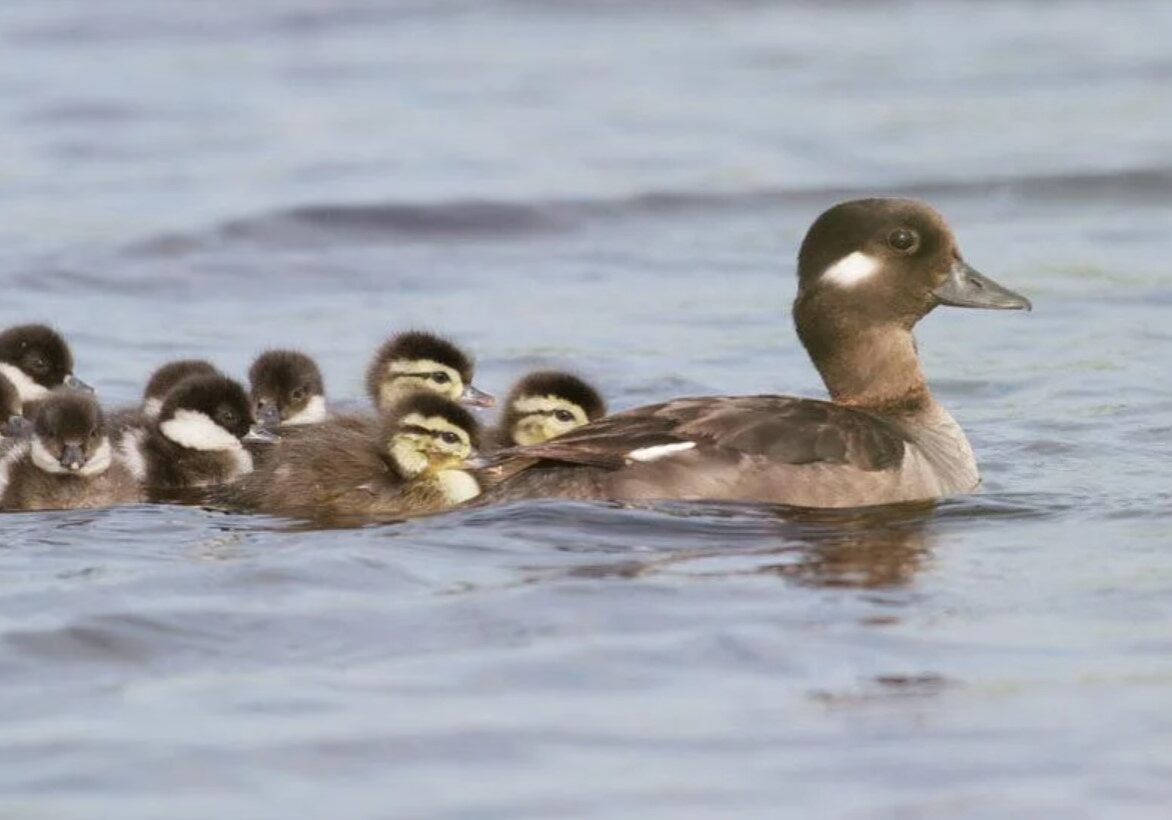
how you can help
- Build them a home! Buffleheads nest in cavities, therefore installing nest boxes near wetlands can help them find a suitable place to nest.
- Leave snags (dead trees) standing in green spaces near wetlands to maintain nesting structures
- Help keep your watershed healthy! We all live in a watershed and what we do in our very own yards has an impact on wetlands nearby.
- Wash your car at the carwash or use biodegradable soap
- Do not litter
- If you are using fertilizers or pesticides on your lawn follow the directions carefully and pay attention to the weather
